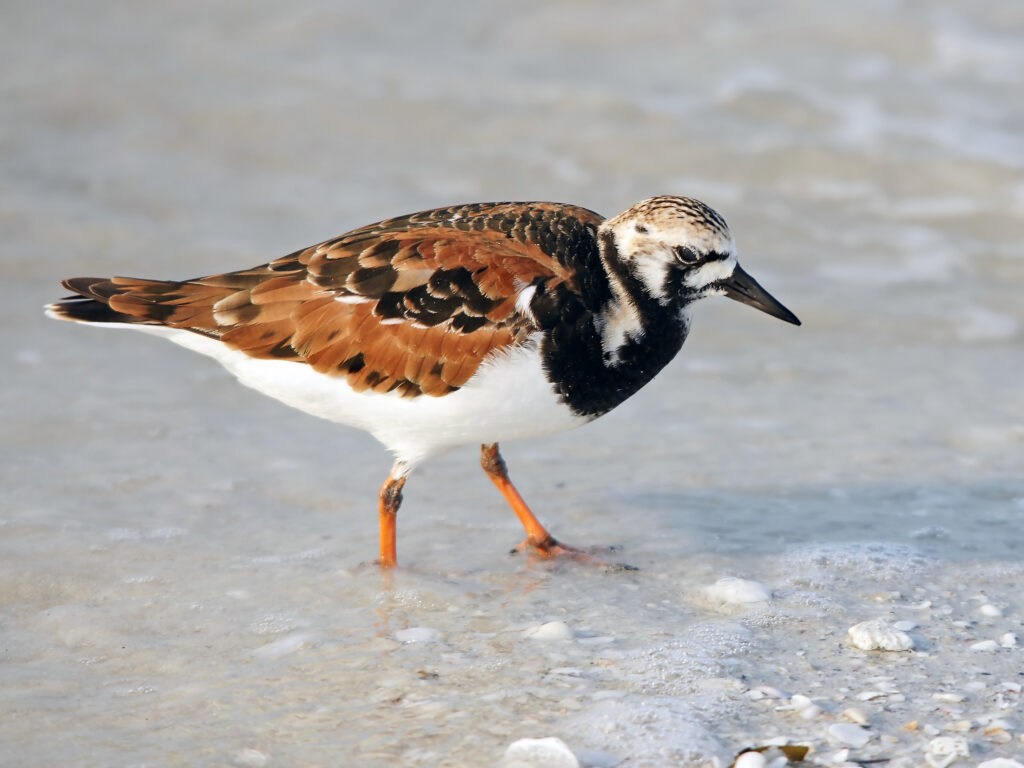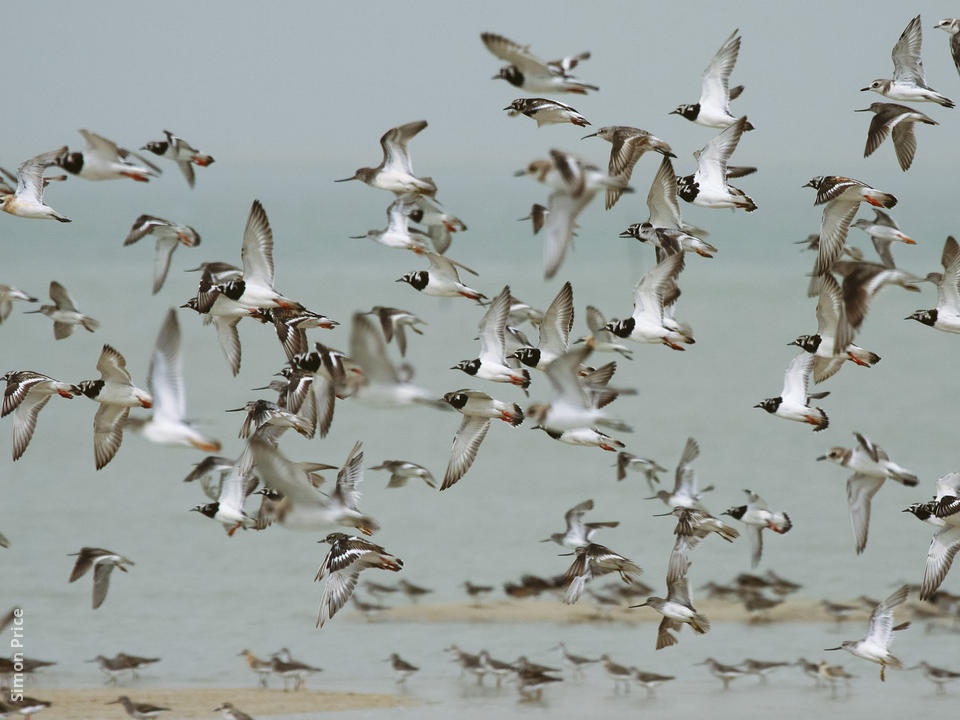This is the time of the year when shorebirds start making their way from their breeding grounds in the tundra to more southern climes. It’s an arduous journey to say the least. So today’s blog is about one of these birds, the very attractive Ruddy Turnstone.

“Ruddy” refers to the reddish color on the back of the bird and “turnstone” to its habit of rolling rocks over to find food.
The Ruddy Turnstone is a stocky medium-sized shorebird with short orange-red legs and a slightly upturned bill. The throat and upper breast are distinctively marked with black or brown with a white belly below. The upperparts are reddish-brown (ruddy) when breeding. A distinctive black and white pattern shows in flight. Ruddy Turnstones are one of the shorebirds that breed the farthest north in the arctic tundra across the top of the world from Canada to Siberia, Greenland, and Scandinavia. When winter arrives they are found in more southern areas from the northern U.S down to the tip of South America as well as coastlines almost worldwide. During migration, they may travel up to 6500 miles one way, sometimes 600 miles in one day, averaging 25 to 50 miles per hour in the air. One study tracked four birds traveling 4500 miles non-stop from Australia to Taiwan over a period of six days. Ruddy Turnstones are well-adapted to foraging along shorelines, using their stout bill to flip over rocks, seaweed, and debris to uncover insects, crustaceans, mollusks, and other small invertebrates beneath. Early in the breeding season the birds may rely on carrion, fish, and plant material until insect abundance increases. They occasionally eat the egg contents of other nesting birds, including shorebirds, gulls, and terns by poking a hole in the egg. On their wintering grounds they may eat barnacles, shrimp and crabs, periwinkles, and clams as well as marine worms.

During the breeding season, Ruddy Turnstones form monogamous relationships (have only one mate) and become very territorial and aggressive. They nest on the ground on the edge of tundra vegetation, constructing a simple nest by scraping a small depression in the ground. The calcium content of the eggs may exceed that of the female that laid the eggs, so she may feed on the teeth of dead lemmings for calcium. The female lays a clutch of usually four eggs and both parents take turns incubating them. The eggs are laid with the pointed end inward so that the eggs do not roll around or out of the simple nest and because they fit together nicely, make it easier for the parents to incubate them efficiently. The young hatch synchronously, within a day of each other, making it easier for both parents to care for and feed the newly hatched young.
On their wintering grounds, Ruddy Turnstones may form flocks of tens of thousands of birds, often with other species of shorebirds. These foraging flocks result as a balance between protection against predators because of greater vigilance (more birds to spot intruder) and increased competition for food with other birds. The threat of predation is significant because shorebirds feed in the open on beaches and rocky shores. Some predators are gulls, ravens, skuas, Peregrine Falcons, foxes, Merlins, and owls. On their nesting grounds during breeding season, predation on Ruddy Turnstones is highest when the lemming population is low. Predators prefer lemmings and only switch to eating small birds when lemmings are less available.
Thank you so much for your informative and fascination article. Feeding on the teeth of dead lemmings … I´m amazed that this bird can digest teeth!
sorry for the typo, should be fascinating article